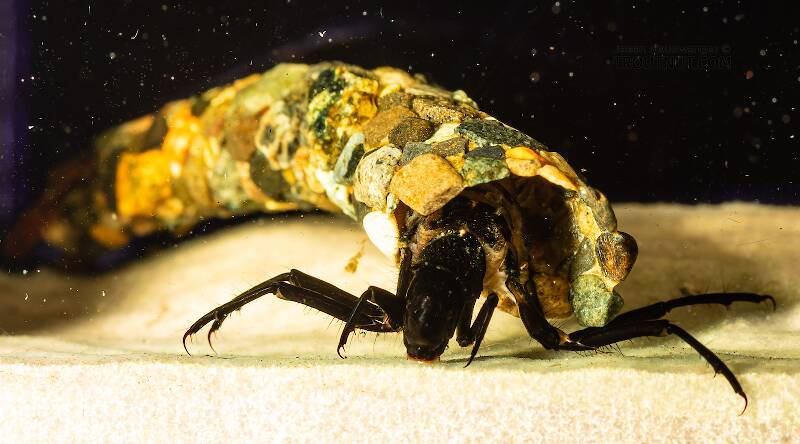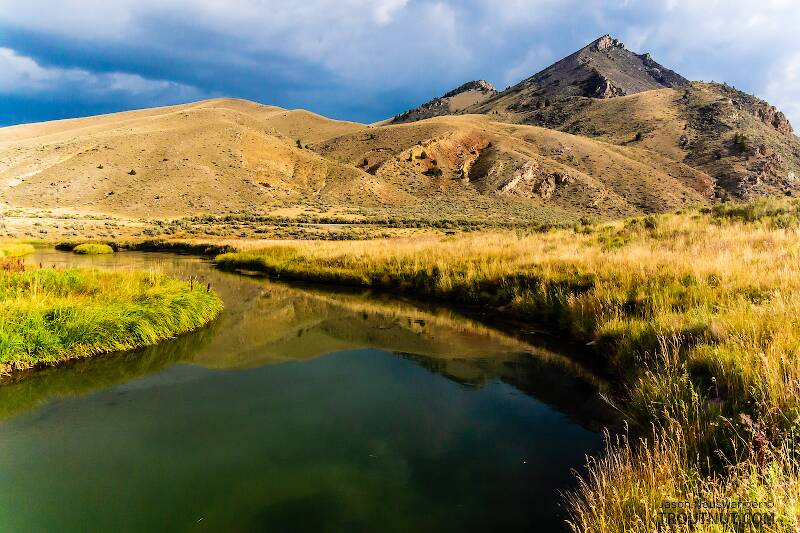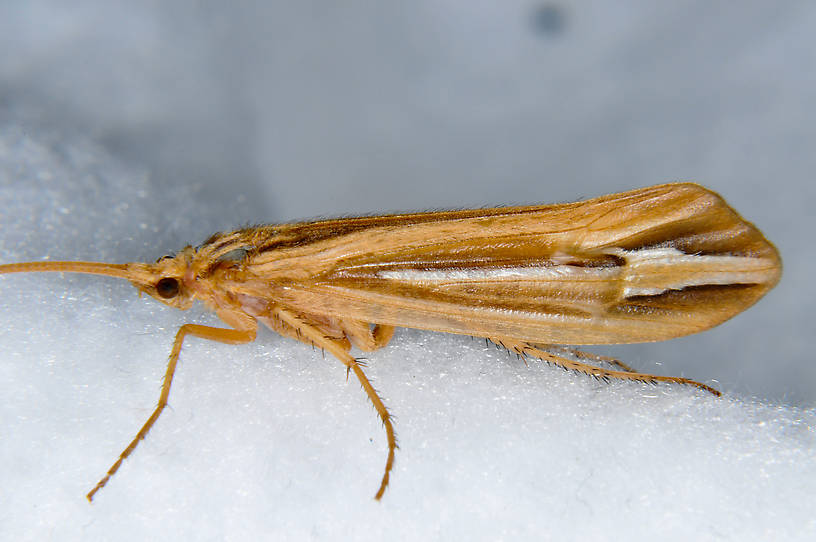
Blue-winged Olives
Baetis
Tiny Baetis mayflies are perhaps the most commonly encountered and imitated by anglers on all American trout streams due to their great abundance, widespread distribution, and trout-friendly emergence habits.
Featured on the forum

This one was surprisingly straightforward to identify. The lack of a sclerite at the base of the lateral hump narrows the field quite a bit, and the other options followed fairly obvious characteristics to Clostoeca, which only has one species, Clostoeca disjuncta.

Troutnut is a project started in 2003 by salmonid ecologist Jason "Troutnut" Neuswanger to help anglers and
fly tyers unabashedly embrace the entomological side of the sport. Learn more about Troutnut or
support the project for an enhanced experience here.
Caddisfly Genus Hesperophylax (Silver Striped Sedges)
These are very large caddisflies, up to 1.3 inches long as adults.
Where & when
Time of year : Emergence in summer, egg-laying in fall
In 248 records from GBIF, adults of this genus have mostly been collected during July (23%), August (21%), June (18%), September (13%), May (12%), and October (6%).
In 139 records from GBIF, this genus has been collected at elevations ranging from 3 to 31496 ft, with an average (median) of 6289 ft.
Genus Range
Hesperophylax Fly Fishing Tips
LaFontaine notes in Caddisflies that the adults are worth imitating, and they make a good searching pattern, but he does not give specifics about their behavior.Specimens of the Caddisfly Genus Hesperophylax
1 Female Adult
1 Larva

Based on both range maps and key characteristics, this larva is either Hesperophylax designatus, Hesperophylax alaskensis, or Hesperophylax occidentalis. However, the species key in Parker & Wiggins (1985) cannot separate these species as larvae.
Start a Discussion of Hesperophylax
References
- LaFontaine, Gary. 1981. Caddisflies. The Lyons Press.
- Parker, C. R., Wiggins, G. B. 1985. The Nearctic Caddisfly Genus Hesperophylax Banks (trichoptera: Limnephilidae). Canadian Journal of Zoology 63(10): 2443-2472.
- Swisher, Doug and Carl Richards. 2000. Selective Trout. The Lyons Press.
Caddisfly Genus Hesperophylax (Silver Striped Sedges)
Taxonomy
Species in Hesperophylax
Hesperophylax designatus
1
1
Species in Hesperophylax: Hesperophylax designatus
5 species (Hesperophylax alaskensis, Hesperophylax consimilis, Hesperophylax magnus, Hesperophylax minutus, and Hesperophylax occidentalis) aren't included.


